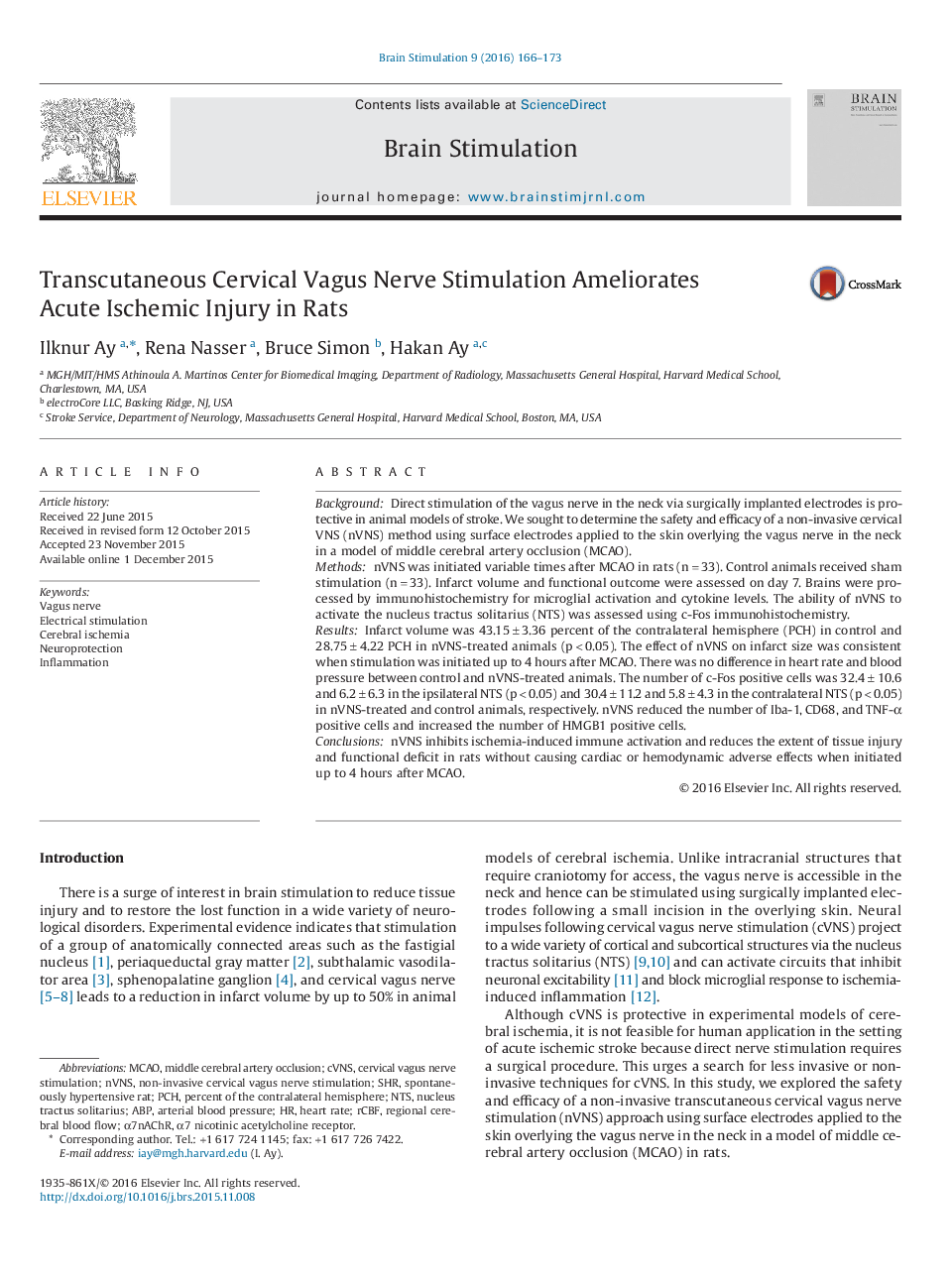| Article ID | Journal | Published Year | Pages | File Type |
|---|---|---|---|---|
| 6005771 | Brain Stimulation | 2016 | 8 Pages |
â¢Noninvasive VNS reduces tissue injury and functional deficit after cerebral ischemia.â¢Therapeutic effect of noninvasive VNS on infarct volume is retained when applied up to 4 hours after ischemia.â¢Noninvasive VNS does not cause any significant cardiac or hemodynamic adverse effects.â¢Noninvasive VNS inhibits microglia activation and normalizes altered cytokine levels after cerebral ischemia.
BackgroundDirect stimulation of the vagus nerve in the neck via surgically implanted electrodes is protective in animal models of stroke. We sought to determine the safety and efficacy of a non-invasive cervical VNS (nVNS) method using surface electrodes applied to the skin overlying the vagus nerve in the neck in a model of middle cerebral artery occlusion (MCAO).MethodsnVNS was initiated variable times after MCAO in rats (nâ=â33). Control animals received sham stimulation (nâ=â33). Infarct volume and functional outcome were assessed on day 7. Brains were processed by immunohistochemistry for microglial activation and cytokine levels. The ability of nVNS to activate the nucleus tractus solitarius (NTS) was assessed using c-Fos immunohistochemistry.ResultsInfarct volume was 43.15â±â3.36 percent of the contralateral hemisphere (PCH) in control and 28.75â±â4.22 PCH in nVNS-treated animals (pâ<â0.05). The effect of nVNS on infarct size was consistent when stimulation was initiated up to 4 hours after MCAO. There was no difference in heart rate and blood pressure between control and nVNS-treated animals. The number of c-Fos positive cells was 32.4â±â10.6 and 6.2â±â6.3 in the ipsilateral NTS (pâ<â0.05) and 30.4â±â11.2 and 5.8â±â4.3 in the contralateral NTS (pâ<â0.05) in nVNS-treated and control animals, respectively. nVNS reduced the number of Iba-1, CD68, and TNF-α positive cells and increased the number of HMGB1 positive cells.ConclusionsnVNS inhibits ischemia-induced immune activation and reduces the extent of tissue injury and functional deficit in rats without causing cardiac or hemodynamic adverse effects when initiated up to 4 hours after MCAO.
